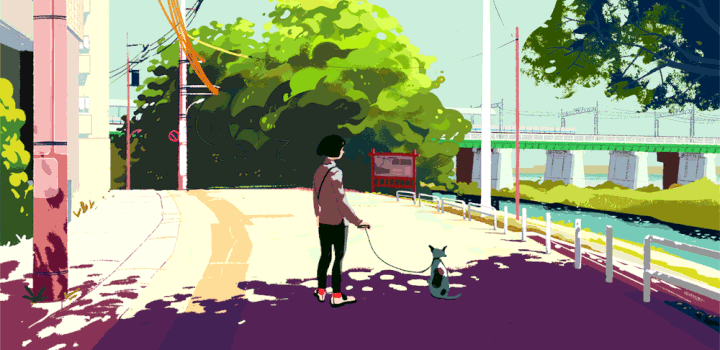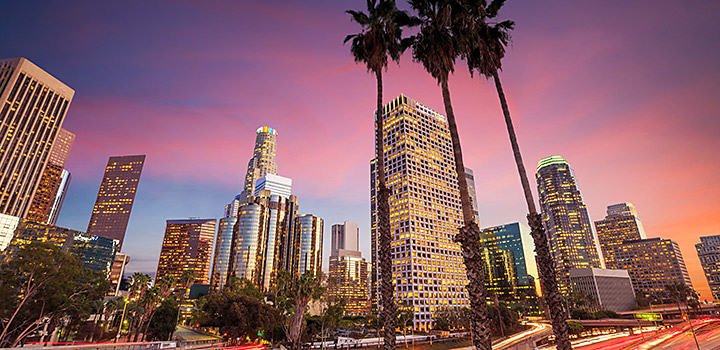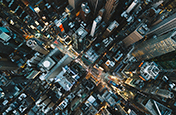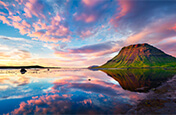La sutileza de los cinemagráficos
Los cinemagráficos, un híbrido de vídeo y foto, son una curiosa herramienta artística nueva del mundo digital.
What is a cinemagraph?
A cinemagraph is a combination of a still image and a video, where most of the scene is stationary, while a section moves on a continuous loop. With the rise of GIFs (looping image files), cinemagraphs have gained popularity online, especially on social media platforms and e-commerce websites. “Still images have impact and the content can be quickly consumed. When you watch a video, people take more time to understand that content,” artist and cinemagraph creator Lindsay Adler notes. Cinemagraphs are a cross between the two formats and can represent the best of both, with a smaller file size than a classic video.
Web audiences see thousands of images every day and are constantly bombarded with advertising. As an artist or brand, “you have to find new ways to grab people’s attention,” explains Adler. “With that little bit of motion, cinemagraphs catch your eye and hold your attention longer. You think, ‘Wait, is this a still image? Is this video?’” In an Instagram feed, anything that stops people from scrolling is something brands and advertisers are going to investigate — cinemagraphs are unexpected. For that reason, they’re becoming popular on Instagram, especially in the form of ads.
“You have to find new ways to grab people’s attention. With that little bit of motion, cinemagraphs catch your eye and hold your attention longer. You think, ‘Wait, is this a still image? Is this video?’”
Exploring the possibilities of cinemagraphs.
There are two main forms of cinemagraphs, a bounce loop and a repeat loop. A bounce loop plays from the beginning of the clip to the end and then plays in reverse from the end to the beginning. This ensures an endless, seamless loop. This style is more suited to subtle movements, like shifting fabric or hair blowing in the wind — bounce loops don’t work for everything. If you have a car driving through your scene, don’t use a bounce loop. The car will appear to drive by and then go back through your frame in reverse.
A repeat loop plays from beginning to end and then starts at the beginning again. To make it seamless, the first and last frame of your video must be identical. If a car drives through the scene, make sure you start filming with it out of the frame and don’t stop recording until it leaves the frame. “You just have to know what you’re planning so that you capture the right thing,” notes Adler.
Cinemagraphs can be illustrated and animated as well. These animated gifs from Rebecca Mock highlight what’s possible with simple animated loops. Whether the entire scene or just a subtle element is animated, a little motion can turn your illustration into something unexpected

Imagen de Rebecca Mock
Creación de un cinemagráfico
1. Planifica el cinemagráfico.
La planificación es fundamental. Si no tienes experiencia trabajando con movimiento o vídeo, no hay problema. “No tienes que comprar herramientas ni equipos adicionales para crear cinemagráficos, por lo que, de esta forma, añadir movimiento a tus trabajos te resultará menos intimidante, sobre todo si te dedicas a la fotografía de imágenes fijas”, asegura Adler. Puedes grabar un vídeo de buena calidad con un smartphone y crear tu propio cinemagráfico a partir de ahí.
Teniendo en cuenta el contenido de tu vídeo, decide qué tipo de movimiento quieres resaltar. Piensa en las distintas opciones de bucle de las que dispones: ¿tiene más sentido usar un bucle de repetición o uno de rebote? A veces, el material de archivo es la mejor opción para crear un cinemagráfico, especialmente si quieres utilizar imágenes de un lugar alejado o si necesitas un vídeo con fondo transparente. En algunas ocasiones, los mejores cinemagráficos se construyen compilando partes móviles más sencillas.

2. Shoot the video footage.
If you plan to shoot your own video, now’s the time to set it up. Make sure you create a shot list in advance to ensure you’ve got the footage you need. Get multiple examples of the movement you want to capture, if possible. Give yourself a buffer at the beginning and end to ensure that you have a still frame to use as your base image. You can use a tripod and shutter release cable to make sure the camera doesn’t move while filming. For a successful final cinemagraph, you need an area of isolated movement.
3. Edita el cinemagráfico.
Cuando tengas el vídeo listo, abre el material en un programa como Adobe Photoshop o After Effects, y elige la imagen fija que constituirá la mayor parte del marco. Coloca una copia de esta imagen fija en una capa nueva. A continuación, crea una máscara de capa en la imagen fija y bloquea el área de movimiento con la herramienta Pincel. La capa de imagen mantendrá la mayor parte del marco inmóvil y mostrará el movimiento de debajo. Después, edita la imagen subyacente para incluir solo la parte del vídeo y el movimiento que necesitas.

También puedes añadir movimiento a las imágenes fijas con la herramienta Sistemas de partículas de After Effects, que permite crear efectos de niebla o humo sin necesidad de contar con un vídeo independiente, así como distorsionar las imágenes y recrear efectos de agua y reflexión. Por tanto, no necesitas un clip de vídeo independiente para añadir movimiento si dispones de las herramientas adecuadas. Cuando estés conforme con el cinemagráfico, expórtalo como archivo GIF.
Más vídeos en bucle
En lo que respecta a los cinemagráficos, existe un sinfín de posibilidades. Echas un vistazo a estos increíbles ejemplos de cinemagráficos e ideas para inspirarte y crear los tuyos propios.
- Mira cómo el artista multimedia Hayden Davis añade movimientos sutiles a su trabajo con cinemagráficos. Como se trata de archivos comprimidos, los GIF y los cinemagráficos se pueden compartir muy fácilmente, de modo son perfectos para los sitios web y las redes sociales.
- El artista Chris Converse utiliza After Effects para recrear el reflejo de la luz en el océano y transformar las imágenes submarinas en impresionantes cinemagráficos.
- Conoce el enfoque creativo que da el artista francés a los cinemagráficos. Sus cinemagráficos se basan en la yuxtaposición de la quietud y el movimiento, con lo que capta y mantiene la atención del espectador.
- Michael Philipp Bader convierte retratos simples en cinemagráficos dinámicos y cautivadores mediante una iluminación dramática y fondos animados sencillos.
Los cinemagráficos son un medio fascinante y accesible que está ayudando a los artistas y a las marcas a llamar la atención de los usuarios y a detener su interminable deslizar de contenido por las redes sociales. Con estas herramientas a tu disposición, puedes comenzar crear un cinemagráfico de gran calidad hoy mismo.
Colaboradores
Do more with Adobe After Effects.
Create incredible motion graphics, text animation and visual effects.
Puede que también estés interesado en…
Cómo editar videos: todo lo que debes saber.
Aprende los principios de la edición de video y consejos prácticos tanto para pantallas grandes como pequeñas.
Learn how this helpful device can help you to capture great, stable footage.
Los planos de contexto son fundamentales, porque nos dicen dónde y, a menudo, cuándo se desarrolla la acción.
Para qué sirven los planos en cinematografía
Descubre los planos cinematográficos más usados y aprende cuándo y cómo emplearlos para conseguir el mejor efecto.
Consigue Adobe After Effects
Puedes crear efectos visuales de cine y gráficos animados.
7 días gratis, luego US$22.99 al mes.



